Balmy March weather has even us northern turkey hunters chomping at the bit to get into the woods—though we’ll have to wait a while yet. Meanwhile, Florida hunters are already at it, and season openers are just around the corner in other southern states. In other words, no matter where you hunt, it’s time to gear up
, practice your calling
, and start clearing the calendar for the 2024 spring turkey season.
With that last item in mind, I interviewed experts from all around country to get their picks for our annual 7 Best Days of the Strut calendar. Now, anyone with some fade in their camo knows this is a tricky proposition. Weather is just one of the uncontrollable factors that can mess up a turkey hunt, and there are others. But when you hunt your home-turf turkeys long enough, you get to know the periods when they’re most vulnerable to your favorite tactics and calling. So that was the question I put to our experts: If you had to pick one day in your area with the highest odds of success, what would it be? What if none of them live where you do? No problem. States with similar climates along the same longitudinal lines should match up well in terms of the turkey breeding cycle—and the best times to hunt them. So, let’s get to it. Open up your calendar app, because here are their picks.
Learn how to subscribe to the new Field & Stream magazine here!
Best Day of the Strut #1: March 25
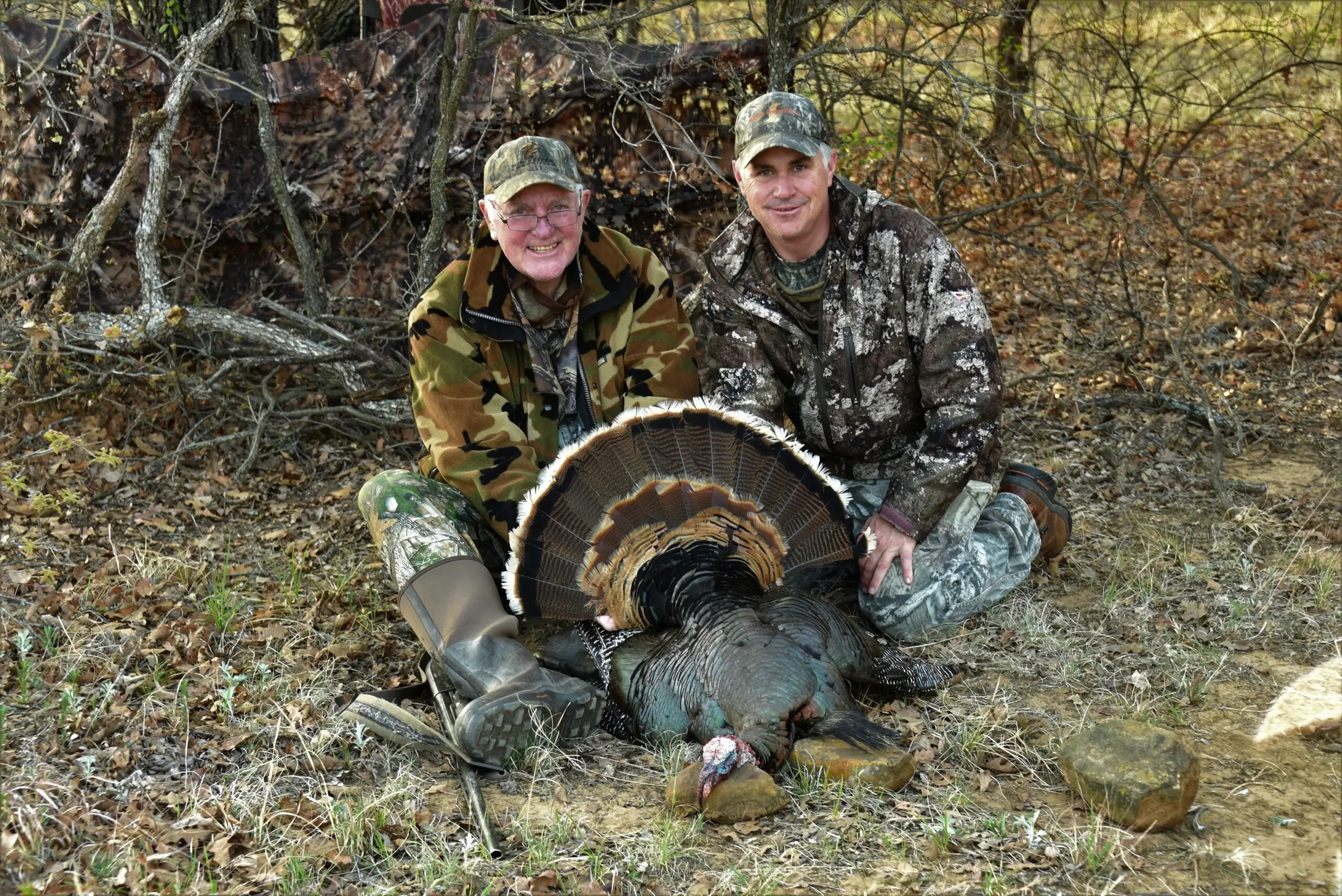
Jim Dixon, left, shows off a nice Rio gobbler taken on a Texas hunt with his son, John. Jim Dickson
Jim Dixon hails from Louisiana but makes it a point to hunt the opener in neighboring south Texas every year. Dixon says the early phases of the Lone Star State’s season will find birds still a bit concentrated, a situation that is made extra apparent because roosting trees are in short supply in brush country. Multiple gobblers and flocked up birds can scare away some hunters, but Dixon has been hunting this time frame long long enough that he not only knows how to score; he’s come to love this part of the season.
“Most toms will be surrounded by hens on the roost, but they’ll lose them after fly-down, so I focus on strut zones off the roost sites for mid-morning and midday hunts,” Dixon says. “I tend to stay at it most of the day if I’m not successful early. Late in the afternoon, I’ll move to staging areas where toms like to gather before it’s roosting time. I’ll find a nice open area within sight of a good roosting tree and just settle in and sit. Sometimes you can score without even calling a whole lot.”
**Related: Best Turkey Calls for 2024, Tested and Reviewed
**
Best Day of the Strut #2: April 15
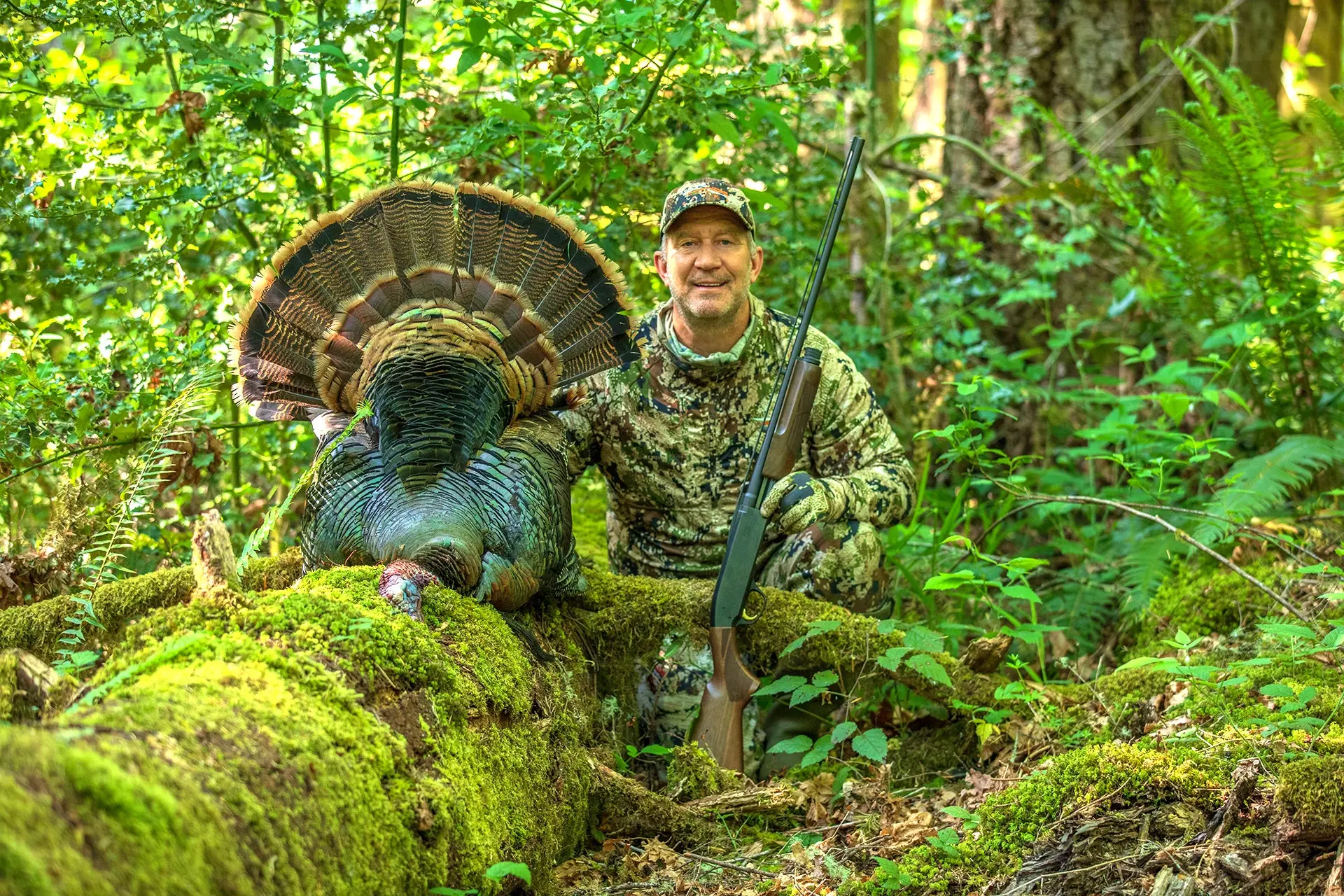
Scott Haugen with a gobbler he took in the deep woods of Oregon’s Cascade Mountains. Scott Haugen
Early in the breeding cycle, weather can have a profound effect on the amount and intensity of breeding activity by both toms and hens. No one knows that better than Scott Haugen, who lives and hunts on the foothills of Oregon’s Cascade mountains. “I love the time frame around our mid-April opener,” he says. “Typically hens have moved off the lowlands and are heading up the mountains and are ready to breed—and, of course, the gobblers are eager to go along. But the weather can be pretty iffy that time of year, and I have to be willing to adapt if it throws a wrench into breeding activity.”
Haugen does just that through a combination of boots-on-the-ground scouting and by employing trail cameras
to help him keep track of toms. “On days when birds gobble, it’s easy to stay in the game,” he says. “But when weather or predators or something shut down toms, trail cams and scouting help me pinpoint the spots that gobblers like to use. That makes me confidence that I’m in a good area, and by using woodsmanship and patience, I stand a good chance of tagging a bird.”
Best Day of the Strut #3: April 17
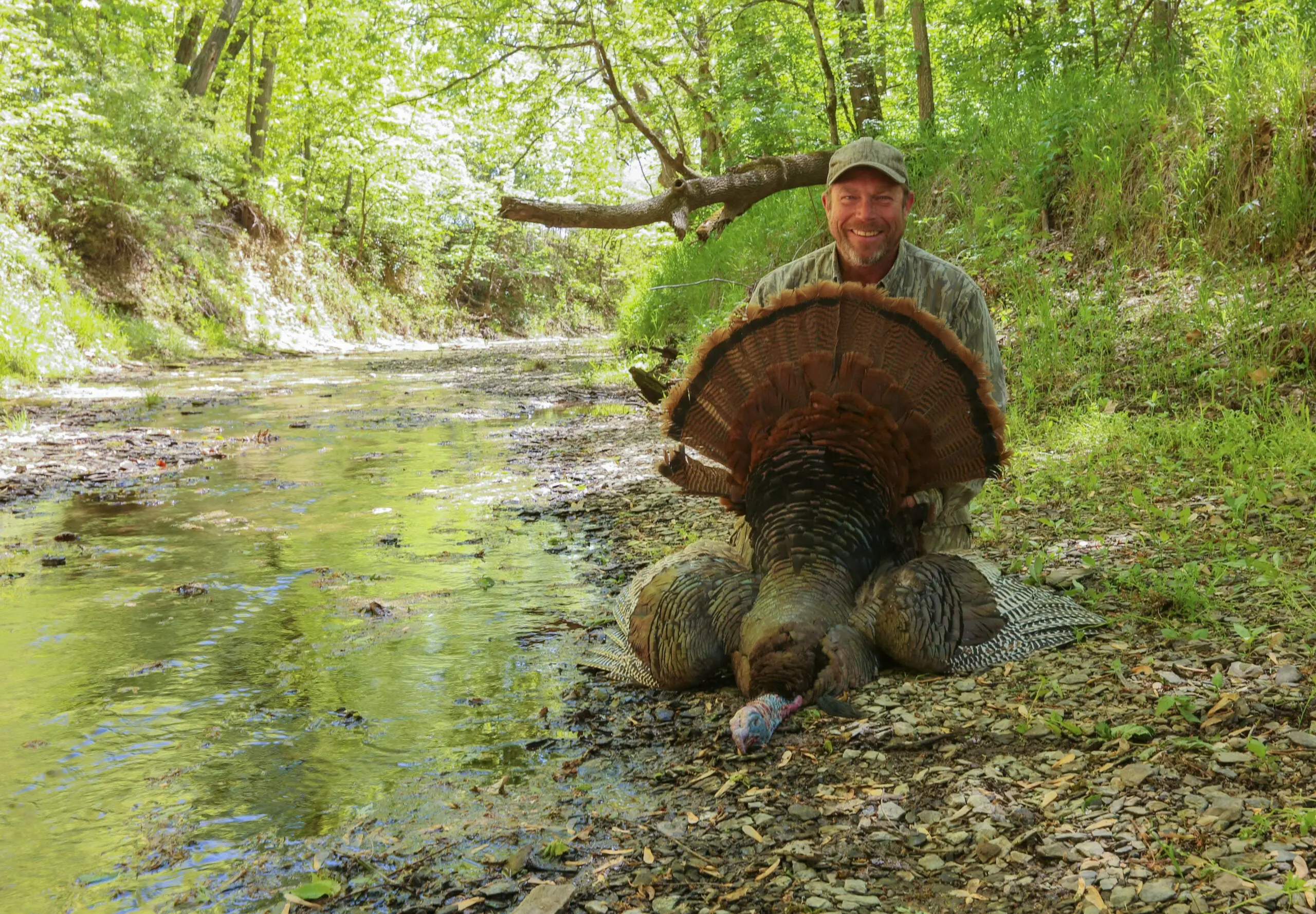
Tom Weddle shows off a big Indiana gobbler. Tom Weddle
If you’re a public-land hunter, you’ve probably wondered at times whether toms have stopped gobbling or if they’re just not around anymore. Indiana expert Tom Weddle certainly has. “As someone who hunts a lot of public ground, I picked our April 17 opener as my best day for the simple fact that there are more targets of opportunity at that time.” he says. “Most hunters like to go on or near the opener, and every single day thereafter sees a reduction in bird numbers in the areas I hunt.”
Weddle also likes the mid-April time frame because breeding is well under way. “I always expect good gobbling on the roost, followed by a lull as hens run to toms to be bred,” he said. “But no matter how many girls he has with him, a tom will almost always pipe up again. I want to be there when he does, because I know that most toms will lose their female companionship at some point during the day, and will be vulnerable again.” No matter how quiet it can seem after fly-down gobbling ends, hang in there through the mid- to late-morning, Weddle advises. “That’s the time of day when I’m hoping for a lonely tom to make me look better than I really am!”
**Related: Where and How to Hunt Public-Land Turkeys
**
Best Day of the Strut #4: April 26
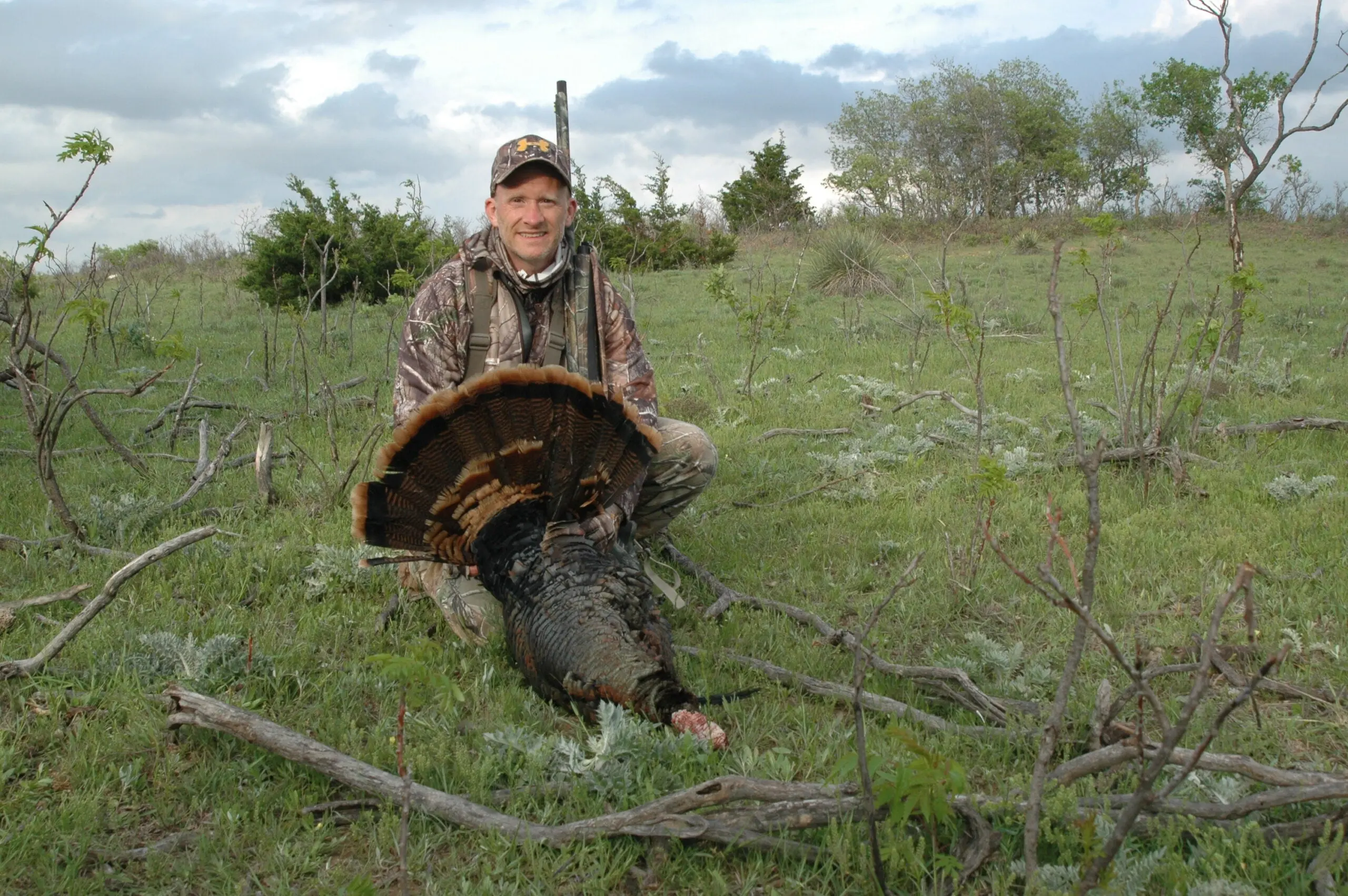
Brian Lovett with just one of over 200 turkeys he’s taken all over the country. Brian Lovett
It’s hard to argue with statistics. Wisconsin expert Brian Lovett is diligent about keeping records of his annual spring hunts, which have taken him across the country in pursuit of gobblers. Lovett has killed well over 200 turkeys in his hunting career, and more of those birds have fallen on his favorite day, April 26, than any other. Given the various factors that can influence hunter success in a season—from breeding activity to weather and hunting pressure (to name just a few)—it seems particularly significant that this one day shines so clearly for an expert who goes at it hard from late March through the end of May.
“Obviously, turkeys are in a different state of the breeding season depending on where I hunt, but this date has really stood out. In Wisconsin, it usually falls before peak breeding, when gobblers aren’t entirely henned-up. If I’m in Kansas or Missouri, I’m usually striking birds later in the morning after they’ve lost some hens. Regardless of location, I take basically the same approach. I used to do a lot of run-and-gunning, looking for that one ultra-hot tom ready to play the game,” Lovett says. “That obviously can, and does, work. But I also noticed that I was bumping a lot of birds that I might otherwise have killed had I been more patient. Now, I spend more time trying to move discreetly toward turkeys that are gobbling but not moving, and just trying to mimic the sounds of hens as naturally as I can. Usually, I can get close enough to pull the gobbler in. That seems to be the most effective, regardless of how toms are behaving.”
Best Day of the Strut #5: April 30
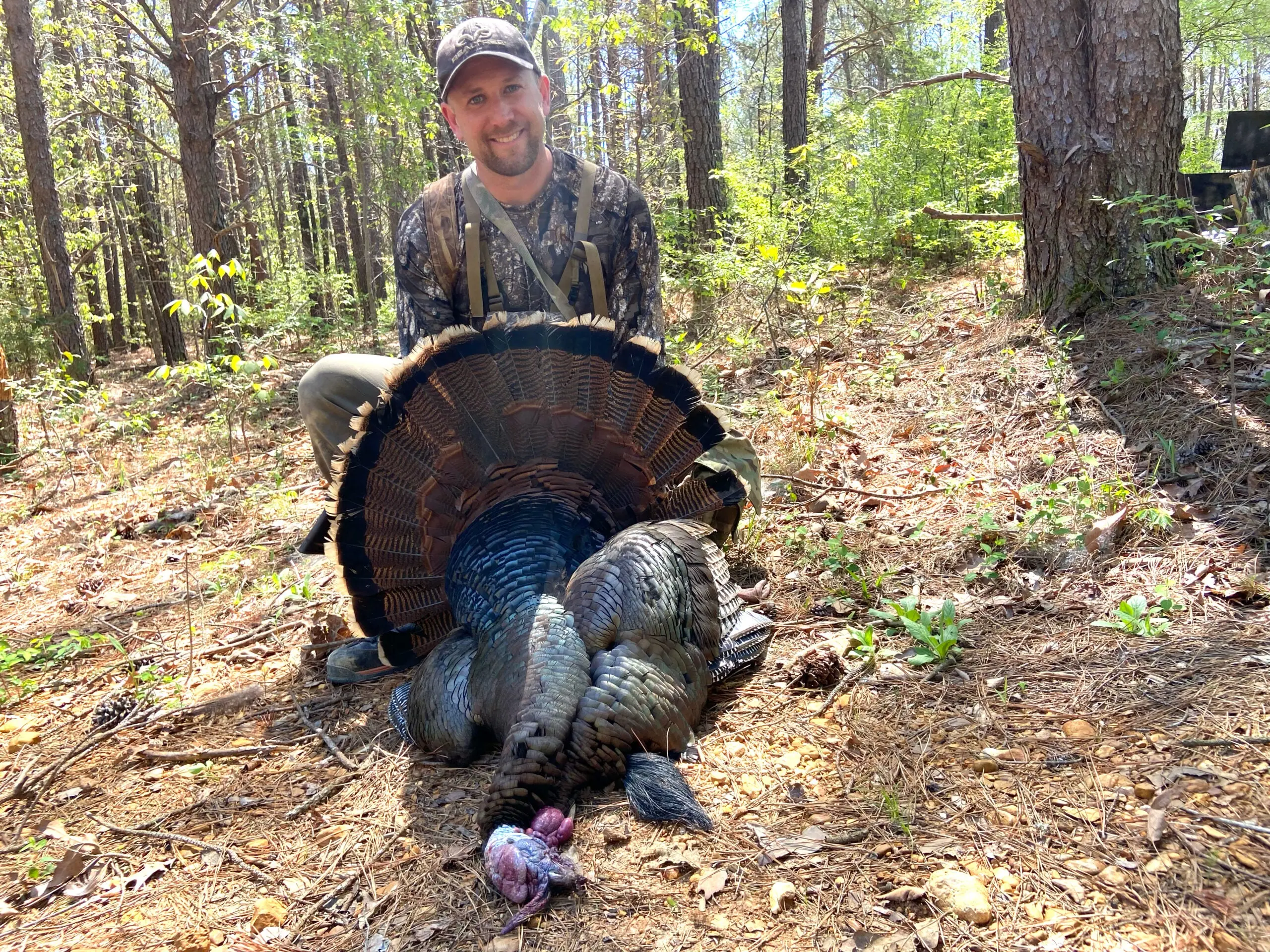
F&S hunting editor, Will Brantley, with public-land tom. Will Brantley
Almost all the experts I talked to do at least some of their hunting on public land, and choosing that type of real estate comes with an inherent challenge—namely, competition from other hunters. Tom Weddle, above, chooses to dive into the fray by joining others for the excitement of opening day. Today’s expert, F&S hunting editor Will Brantley, takes a different tack on the same problem by simply going when there’ll be less chance of interference. “There’s no doubt that fewer people hunt on a weekday compared to a weekend,” he says. “And when I hear a gobbler, I want to be able to go after him without worrying about another hunter with the same thought. That’s why I picked today as my go-to, for no other reason than it’s a Tuesday during a good general time frame for our area.”
Brantley has been hunting the gobblers of his native Kentucky and neighboring Tennessee long enough to know how to be successful regardless of breeding phase, but he also likes his pick because it typically coincides with a second spike in gobbling activity. “We get a nice pulse of gobbling at the opener, then there’s a period when birds get pretty henned-up and you can listen for a long time and swear there’s not a tom left in the timber,” he laughs. “But by the end of the month, they’re back at it again, as more hens begin to nest. Give me a weekday and a gobbler or two to chase, and I’m a pretty happy hunter.”
**Related: Best Turkey Decoys for 2024
**
Best Day of the Strut #6: May 15
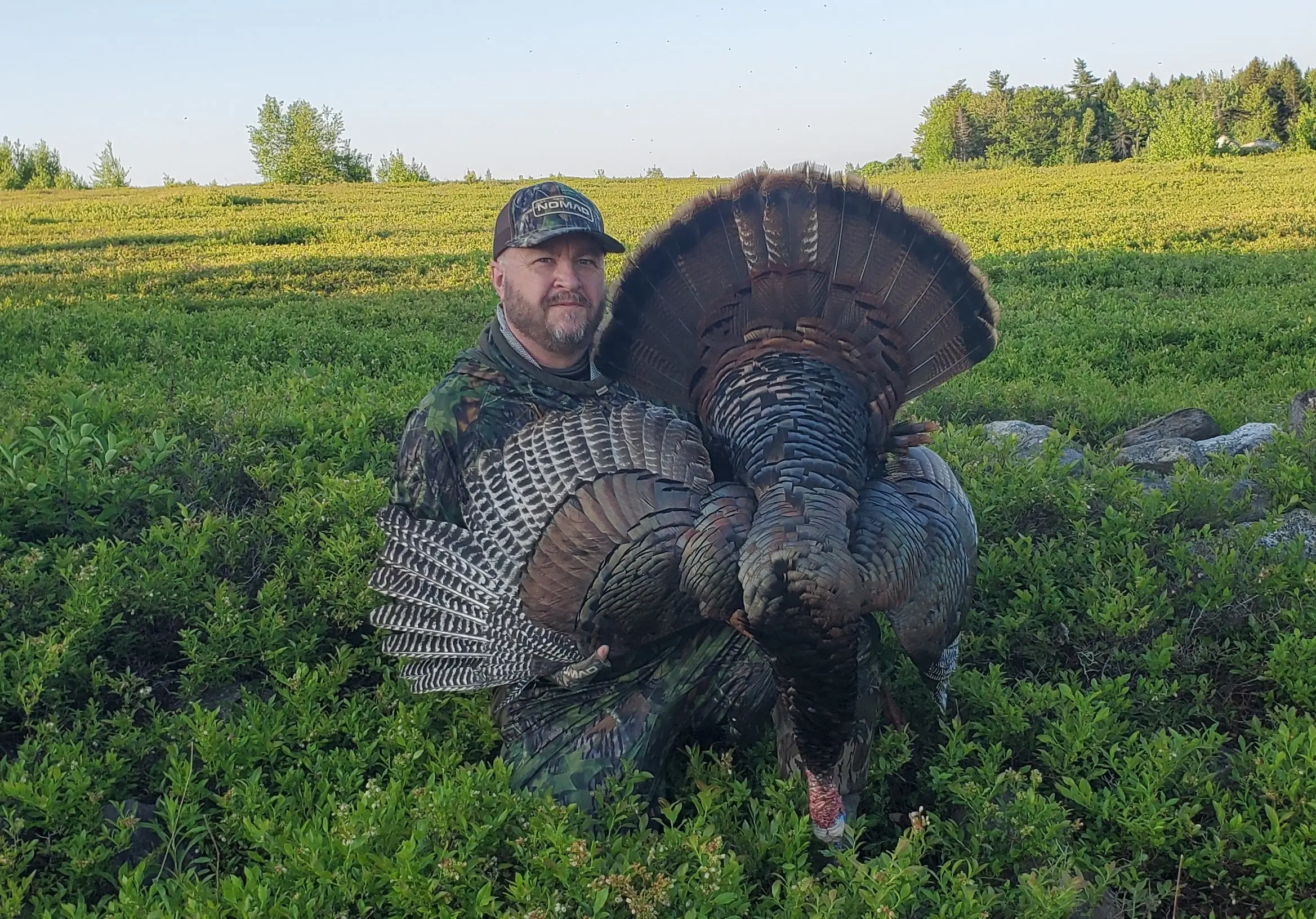
Vermont expert Brett Ladeau shows off a nice gobbler. Brett Ladeau
The fly-down hunt is always exciting—at least for those blissful moments when a tom is sounding off from the tree and greeting the morning with gusto. But as we’ve all learned repeatedly, no amount of roost gobbling guarantees a shot opportunity. Still, Vermont expert Brett Ladeau points out that by mid-May, trees in his region have leafed out enough to allow him to set up super-tight to roosts. Closing the distance, he says, substantially ups the odds of success on a fly-down hunt.
“I always joke that I’m about a step and a half away from bumping the bird I set up on,” he says. “Typically, the leaf cover now lets me slip within a 100 yards of a tom, and if I can get closer than that, I do. I think that 70- to 80-yard mark is about ideal. Since hens have started to lay eggs and nest here by then, they’re not roosted as tight to gobblers as they were earlier in the season. So, if I can be the hen that’s the easiest for the gobbler to get to, I’ve cleared a big hurdle, and chances are high his first move after hitting the ground is to come and pay me a visit.”
Best Day of the Strut #7: May 30
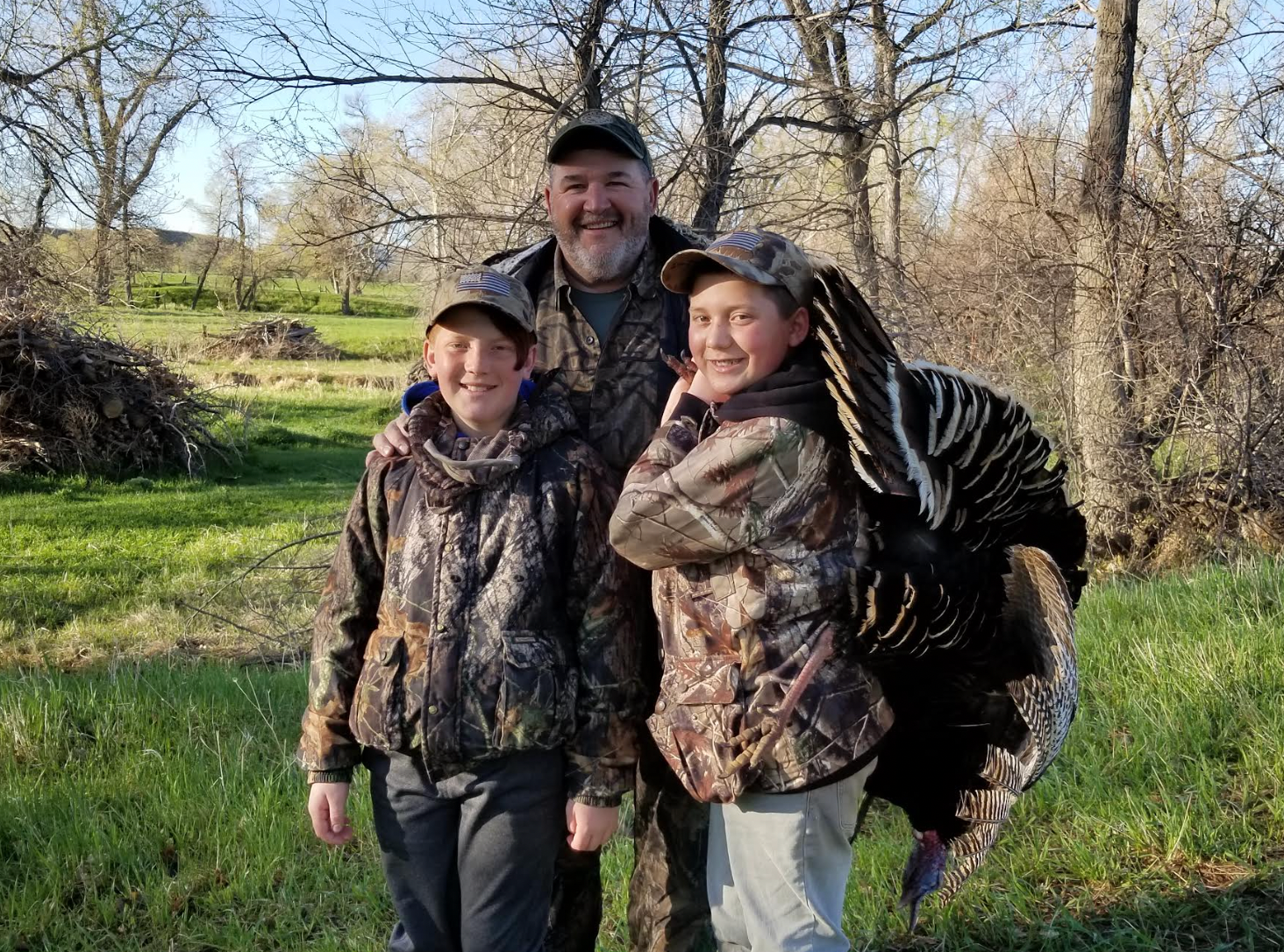
South Dakota pro Dave Ciani, on a hunt with his grandsons Eli and Gannon Eklund. Dave Ciani
For a lot of turkey hunters, there’s nothing more exciting than opening day. Then there’s Dave Ciani, a South Dakota guide who puts his clients on birds from the April opener to the last legal opportunity. While some burnout can be expected after many early mornings, Ciani didn’t think twice when asked for his favorite time to chase Black Hills Merriams. “I like the last couple days of the season,” he said. “The weather is just nicer, and it’s a pretty time to be out there with the birds.”
There’s a lot to be said for weather conditions, which can be pretty fickle (and downright nasty) as winter gives way to spring in the Hills, but much nicer later in the season. Ciani says food is a factor too. “Turkeys have been on dry rations since last fall, and by late May you have green food sources like crocuses, dandelions, clover—not to mention bugs and salamanders. If I can find a pretty mountain side with some greening food sources, I’m probably going to find birds. And I’ve usually got a pretty good handle on those places after guiding hunters all spring. Turkeys will be moving up into the mountains after spending the winter down low, and as beautiful as it is now to spend a day up there with them, it’s also a great time to put a tag on a longbeard. I’ve taken some great toms in those last couple days of the season here.”






